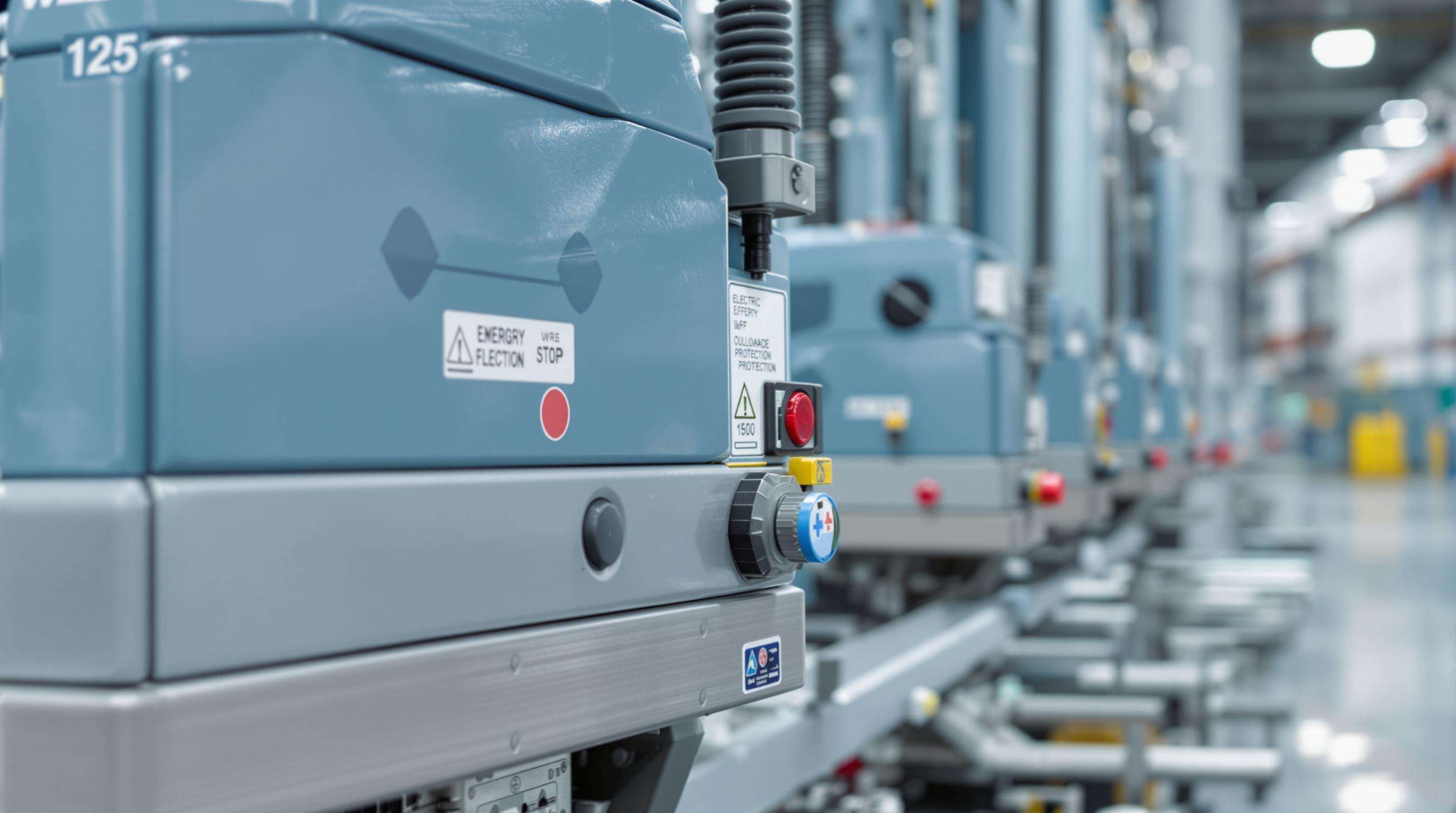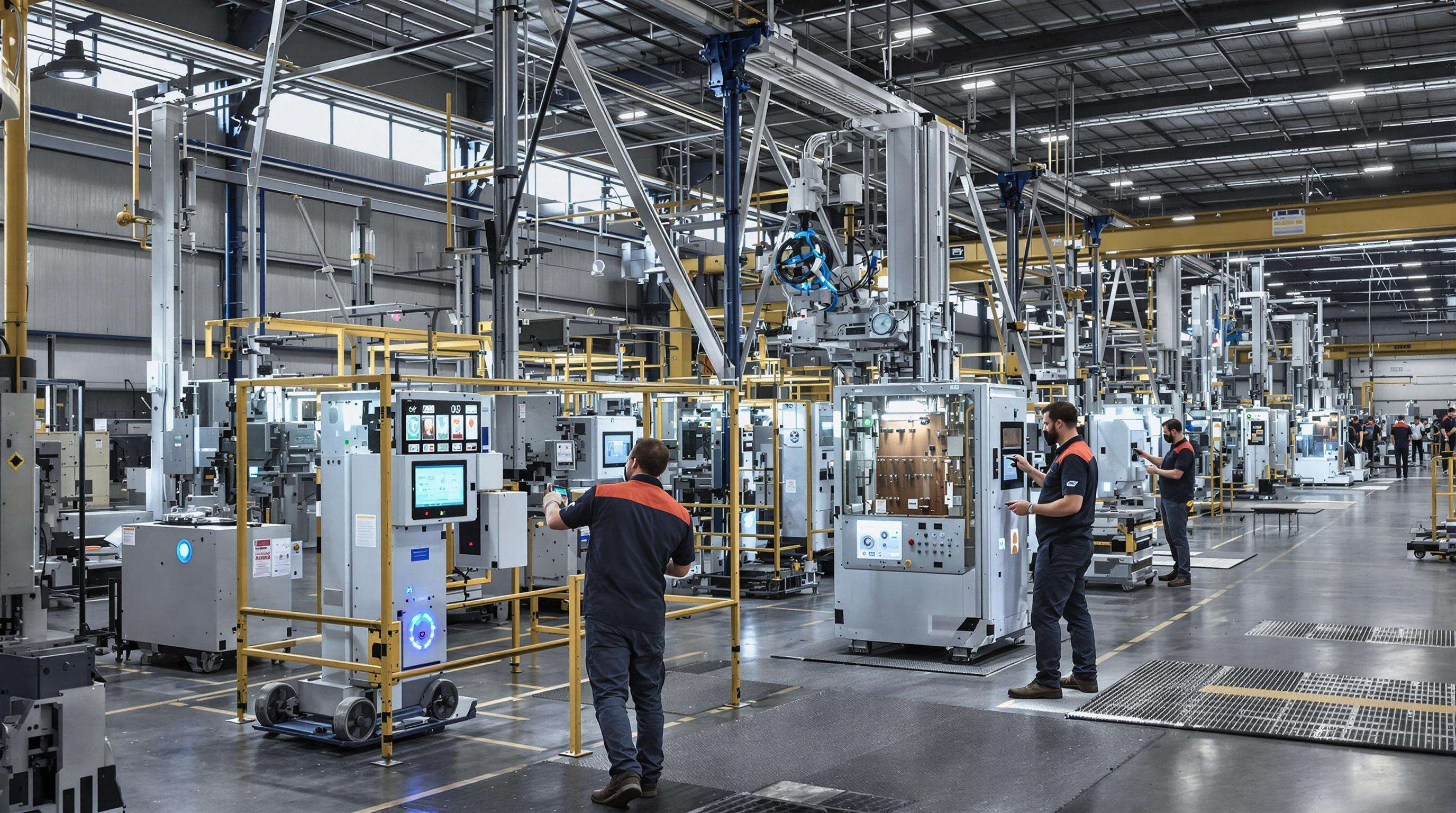Mekanizma të Përmirësuara të Sigurisë në Ekuipman Lifting Elektrik

Ekuipmani moderne lifting elektrike integron mekanizma të avancuara të sigurisë që zvogëlojnë risket në vendin e punës, ndërkohë që mbajnë efikasitetin operacional. Këto sisteme kombinojnë mbrojtje mekanike me mbikëqyrje digjitale për të siguruar mbrojtje të shumëfishtë kundër rrezikëve, kryesisht përmes parandalimit të tej ngarkesës, monitorimit në kohë reale dhe funksionit të ndaljes së emergjencës.
Sistemet e Mbrojtjes nga Tej Ngarkesa që Parandalojnë Aksidentet në Vendin e Punës
Sistemet e mbrojtjes nga mbingarkesa aktivizojnë automatikisht frenat elektromagnetike kur kapacitetet e përcaktuara tejkalohen, duke parandaluar dëmet strukturore të cilat përbëjnë 38% të rasteve të ngarkesave të rritura. Modelet e avancuara kërkojnë verifikimin e dyfishtë të peshës dhe ekuilibrit para se të lejohet ngritja, duke eliminuar kështu rreziqet nga shpërndarja jo e barabartë e ngarkesës - një shkak kryesor i kolapsit të pajisjeve.
Zgjidhje për Menaxhim të Rrezikëve në Kohë Reale
Sensorët pa tel shënojnë në kohë reale tensionin e pajisjeve, temperaturën dhe stabilitetin e ngarkesës, me panele qendrore që tregojnë parametrat kritikë. Sistemet ndalojnë automatikisht operacionet kur vlerat ekalohen të cilat janë të rrezikshme, si p.sh. kur këndi i pjerrtësisë tejkalon 3 gradë - duke zvogëluar gabimet njerëzore me 27% krahasuar me inspektimet manuale.
Funksioni i Ndalimit të Urgjencës për Të Gjitha Llojet e Pajisjeve
Protokollet e standartizuara të ndalimit të emergjencës sigurojnë kohë të ndalimit të njëjta nën 1.2 sekonda për të gjitha llojet e pajisjeve. Kontrollorët pa tel lejojnë aktivizimin nga distanca 50 metrash, ndërsa dizajnet me pedale të ndërhyrjes së lirë të duarve parandalojnë 89% të lëndimeve nga shtypja gjatë mëfunksionimeve mekanike.
Teknologjia inteligjente që rëndon efikasitetin e ngritjes elektrike

Aftësitë për ndjekjen e ngarkesës në sistemet moderne të ngritjes
Sistemet moderne të ngritjes automatikisht i përshtasin parametrat e ngritjes duke përdorur sensorë të tensionit dhe të presionit që mbajnë saktësi matëse të peshës ±0.5%, duke parandaluar situatat e ngarkesës së tepërt që janë përgjegjëse për 23% të aksidenteve gjatë manipulimit të materialeve.
Operimi me komandë tërhiqës pa tel duke reduktuar gabimet njerëzore
Sistemet e kontrollit me frekuencë radiofonike lejojnë operimin nga 300 metra me protokolle me dy autentikime, duke reduktuar rreziqet e lidhura me afërsinë dhe gabimet operative me 41% krahasuar me modelet me kontroll me palëtë.
Mirëmbajtja parashikuese nëpërmjet integrimi IoT
Ekuipamenti i pajisur me IoT analizon 80+ parametrat operacionale për të parashikuar dështimet e përbërësve 400-600 orë përpara. Kjo qasje proaktive e zvogëlon ndërprerjet e paplanifikuara të punës me 34%, ndërkohë që zgjat jetën e përbërësve.
Përparësitë në Eficiencën e Kostove të Ekuipamenteve Elektrike për Ngarkim
Krahasimet e Konsumit të Energjisë: Elektrike kundër Hidraulike
Sistemet elektrike e reduktojnë konsumin e energjisë me 30–50% krahasuar me alternativat hidraulike, duke kursyer magazina nga 12,000 deri në 18,000 dollarë në vit për kostot e energjisë. Përparësia në eficiencë rrjedh nga eliminimi i humbjeve nga shpërndarja e nxehtësisë hidraulike dhe kërkesave për mirëmbajtjen e lëngut.
Fitimet në Produktivitet nga Orët e Puna të Zgjatura
Bateritë litio-jonike lejojnë turne operative 8-orëshe me cikle shkarkimi 2-orëshe, duke siguruar një produktivitet ditore 20–30% më të lartë krahasuar me sistemet hidraulike. Instalimet që përdorin makina elektrike për ngarkim kryejnë 14% më shumë detyra në turne, gjë që rezulton në kursime prej 740 mijë dollarë në vit në produktivitet.
Strategjitë për Zbatimin e Protokolleve të Sigurisë
Programet e Detyrueshme të Trajnimit për Operatorët e Ekuipmanit
Programet e trajnimit të alinuara me ISO 21482 zvogëlojnë incidentet e lidhura me ngarkimin me 32% përmes:
- Skemat e simulimit të mbingarkesës
- Modulet e sigurisë në realitet virtual
- Vlerësimet e kompetencave çdo dy vjet
Auditet e rregullta të sigurisë dhe procese certifikimi
Auditet tremujore që zbulonin 58% të pikave të mundshme të dështimit para se të ndodhin incidentet, ku certifikimi kërkonte:
- testimin e ngarkesës me kapacitet 110%
- Verifikimin e përgjigjes së ndalimit të emergjencës (<0.5 sekonda)
- Validimin e sistemit të mbikëqyrjes IoT
Sistemet jo të përputhshme duhet të përmbushin specifikimet ANSI B30.21 para se të kthehen në shërbim.
Inovacionet e ardhshme në projektimin e pajisjeve elektrike për ngarkim
Sisteme e Bregdet për Largimin e Ngadhenjave
Algoritmet e AI-së përpunojnë të dhënat e LiDAR-it dhe të kamerës për të parashikuar përplasjet, duke u bërë që të zvogëlojë rastet e ndërprerjes së punës nga 40–60% përmes rregullimeve automatike të shpejtësisë dhe trajektores.
Zgjidhje të energjisë së qëndrueshme për operacione të gjelbra
Sistemet e energjisë shumëburimore që përfshijnë bateri litio-jonike dhe qeliza të hidrogjenit të karburantit zvogëlojnë kostot vjetore të energjisë nga 18–25% ndërsa mbështesin objektivat për certifikimin ISO 14001.
Procedurat e mirëkryerjes me ndihmën e realitetit të shtuar
Syze të mençura AR-i shfaqin skematike digjitale gjatë riparimeve, duke u bërë që të zvogëlojë gabimet në mirëkryerje nga 75% dhe të ndajë kohën e riparimit në gjysmë krahasuar me metodat tradicionale.
Pyetje të Shpeshta
Cilat karakteristika sigurie janë të integruara në pajisjet moderne elektrike për ngarkim?
Pajisjet moderne elektrike për ngarkim përfshijnë sisteme mbrojtëse ndaj ngarkesës së tepërt, zgjidhje për monitorim në kohë reale dhe funksionalitet të ndërprerjes së emergjencës për të përmirësuar sigurinë.
Si funksionojnë sistemet e mbrojtjes nga mbingarkesa?
Sistemet e mbrojtjes nga mbingarkesa aktivizojnë automatikisht frenat kur kapaciteti tejkalohet dhe kërkojnë verifikim të dyfishtë të peshës dhe ekuilibrit për të parandaluar aksidentet.
Pse është e rëndësishme mbledhja e të dhënave në kohë reale në pajisjet elektrike ngjitëse?
Mbikëqyrja në kohë reale ndihmon në gjurmimin e shtresës së pajisjeve, temperaturës dhe stabilitetit të ngarkesës, duke ndërprerë automatikisht operacionet kur kalohen pragjet kritike.
Cilat janë përparësitë ekonomike të përdorimit të pajisjeve elektrike ngjitëse në krahasim me sistemet hidraulike?
Sistemet elektrike i reduktojnë shpenzimet e energjisë në mënyrë të konsiderueshme, duke rezultuar në kursime të mëdha vjetore, dhe lejojnë orë të zgjatura operimi me bateri.
Përmbajtja
- Mekanizma të Përmirësuara të Sigurisë në Ekuipman Lifting Elektrik
- Teknologjia inteligjente që rëndon efikasitetin e ngritjes elektrike
- Përparësitë në Eficiencën e Kostove të Ekuipamenteve Elektrike për Ngarkim
- Strategjitë për Zbatimin e Protokolleve të Sigurisë
- Inovacionet e ardhshme në projektimin e pajisjeve elektrike për ngarkim
-
Pyetje të Shpeshta
- Cilat karakteristika sigurie janë të integruara në pajisjet moderne elektrike për ngarkim?
- Si funksionojnë sistemet e mbrojtjes nga mbingarkesa?
- Pse është e rëndësishme mbledhja e të dhënave në kohë reale në pajisjet elektrike ngjitëse?
- Cilat janë përparësitë ekonomike të përdorimit të pajisjeve elektrike ngjitëse në krahasim me sistemet hidraulike?

